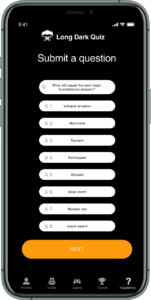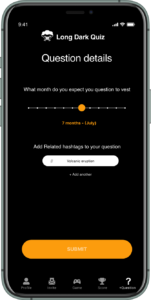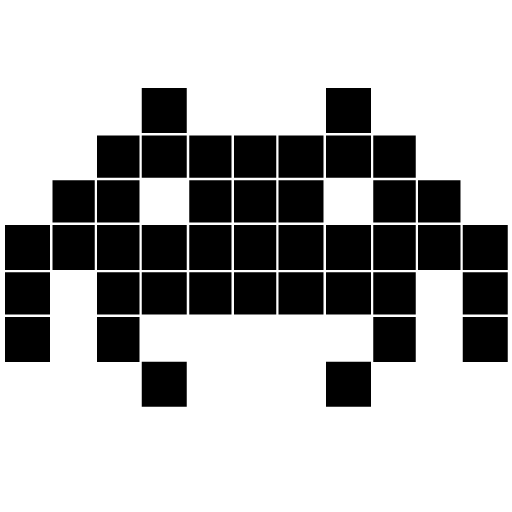‘For future thinking antagonists’
***Long Dark Quiz is currently in prototyping phase and is covered by a NDA***
The problem
With the pandemic people have been grounded in their homes forced to socially distance.
More and more conversations have moved to online chats as people are desprate to connect with each other. Video conferencing software companies have claimed that their has been a 40% upturn in new users subscribing to services. But unfortunately conversations
can be quick to run dry. The pandemic has been very stressful for everyone and they have been looking for distractions or ways to alleviate it.
The Solution
I wanted to find a way to help people reconnect and keep them entertained at the same time. Humour is proven to reduce stress, so I combined all these aspects into a new and innovative party game. This is how ‘Long Dark Quiz’ came about. LDQ gives you a chance to discuss current topics with your friends, face some of your fears and laugh out loud at the same time.
Personas
These personas were created to help illustrate the use cases for the game (remote vs in person). They are based off conversations with peers and friends who showed an interest in the game concept or who play similar games themselves.
Login screens design (UI)
The game
Beware this game in not for the faint hearted. Content is key and the laughs will come from the edgy somewhat warped outlook the game has. It has a purely tongue in cheek tone set to provoke and disrupt your evening.
A look at the games flow for a single question
1. Opening screen – First question appears with a number of possible answers. When one is used it is unavailable to the other players. (As seen in the first wire below).
2. Computer prompt to gamers – To encourage them to speed up and create a bit of pressure.
3. User selects first answer – This is what the user see when they select an answer. The buttons toggle on or off. But be careful not to loose the answer you want. (As seen in the Second wire below).
4. Competitor selects second answer – So it is now unavailable.
5. All the answers have been taken and now you can reveal who answered what to increase the tension between the players. (As seen in the third wire below).
6. Once the question has been answered the players can pause and discussion the round or hit ‘Next question’ and continue.
Categories
The icons have been designed to give a quick visual indicator to the plays to show them the category that the current question is about.
Submit a question
This is another way for the players to be engaged with the game. Testing to shown that players want to have an imput with the content. Seeing their question appear in the game would be very rewarding. It also will help us grow scale the game. The questions will have to go through a strict approval process as we would be liable for what content we display in the game.
There is some complexity in the question creation. There are two types of question and answers.
Quick fire questions:
Consist of short answers (Maximum of 25 characters)
There can be 6 or 8 possible answers
Regular questions:
Longer answers (Maximum of 45 characters)
6 answers only
6 7
7 8
8
How I tried to solver the question creation complexity
1. Displays the rules on how to create the questions
2. The question box is opened and highlighted to draw attention
3. There is a character counter to assist the user in writing the question lenth. This screen shows a question that meets the charater lenth criteria.
4. The character counter allows the user to go over the question limit by 20 characters to assist them in writing. Then the have to cut the copy to meet the criteria. Once over the limit it adds a minus and then counts how many characters the user is over.
5. This screen shows the user exceeding the short answer criteria. When they do this two of the input fields are removed. If they cut the copy and the criteria is met, they reappear.
6. Once all of the answers have been added and they fit one to the two possible question criterias. The ‘Next’ button is selectable.
7. This screen helps us gage when we question will vest. This infomation is needed as it is a manual process to configure a score of when to display the question. The user has a slider where they can estimate when they think the question will come into fruition. There is also a componant box to allow them to add hash tag. You can add up to 6. Just click the ‘+ Add another’ button to add a new componant box.
8. This is a thank you screen that advises the user that it is not garanteed that their question will be used.
Goals
The interface needs to be familiar. Jakob’s Law explains that user prefer your site (UI) to work the same way as all the other sites they already know. This higlights users need to have as small as a learning curve possible, idealy none at all. They should be able to instantly know how to navagate and use the webapp.
We have started testing the UI with small groups, but continual testing will carry out throughout the games lifeciycle. Our current tests are regarding the usability of the interface. We have given small groups tasks to compleate on our online verson of the prototype. This has highlighted a few pain points.
Question logic
When questions play out we have two ways of capturing the data. One is a manual entry by people we are calling spotters. They have a set number of questions that they follow and trigger a manual update.
The other is by a scraping. We have configured an algorithm that trawls the internet for the answers. Looking at sites and search engine data from places like Quora and Google.
The game uses a sorting system in its database so that it evenly distributes questions along the time period selected. We have estimated when we expect them to come into fruition and balance them out so that the users are regally being engaged, making the game live on after the questions have been answered.
Once and answer has been verified an email will be sent to all the participants along with each of their score and a leader board to compare their positions. A Countdown clock animates in the email showing how much longer of the game is left.
How do we monetise?
We have three possible revenue streams.
1. Betting, users can select stake and we will take a small percentage off the top of the winning pot. Gambling laws are fairly relaxed in the UK but gaming licences need to be acquired and maintained. Scaling to other counties will be a problem as their laws are much stricter.
2. Adding in a crypto token. We have designed a token that would mint with each correct answer that a user selects. With us owning a large amount of tokens as they rise in value for being won and traded. So would our reserves.
3. Adding in adverts, for example Google pays 2 cents per click through. We have estimated that we would make more money for users by allowing them to pay to have the adverts removed.

















 5
5

